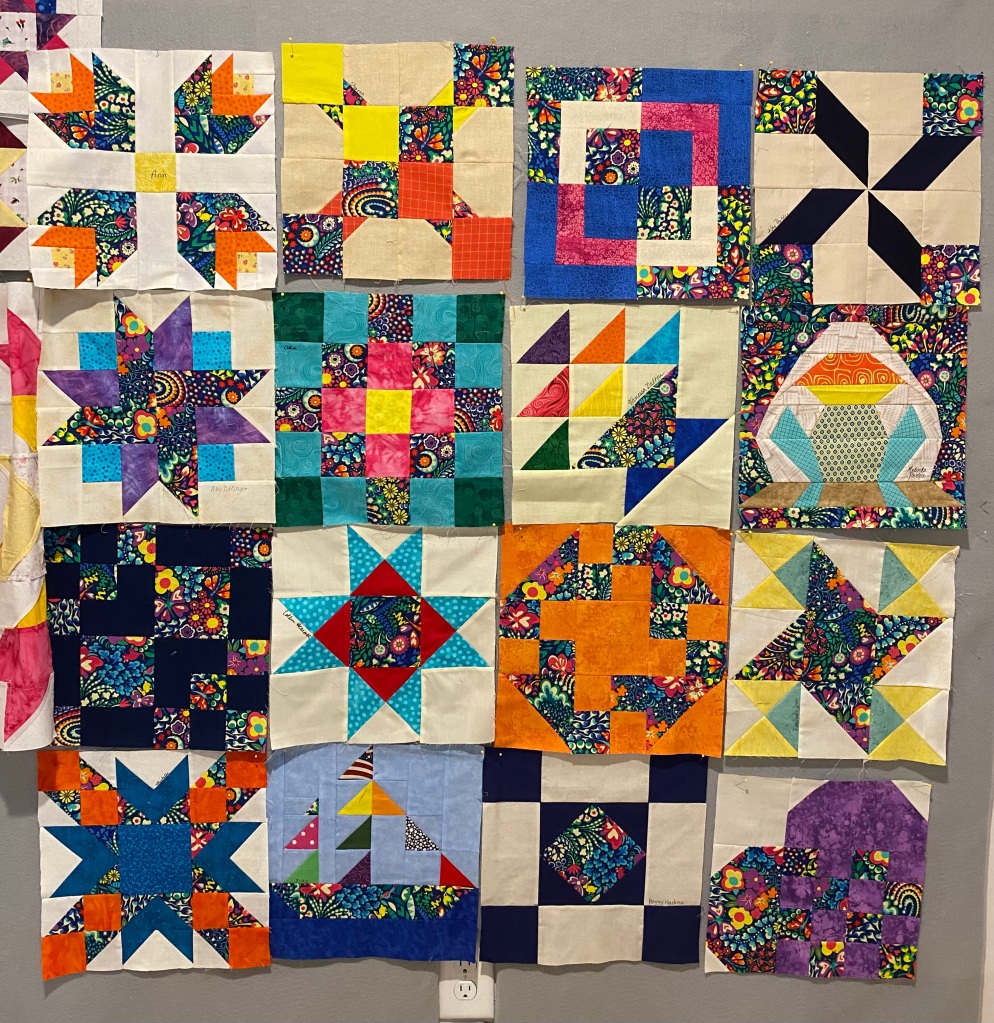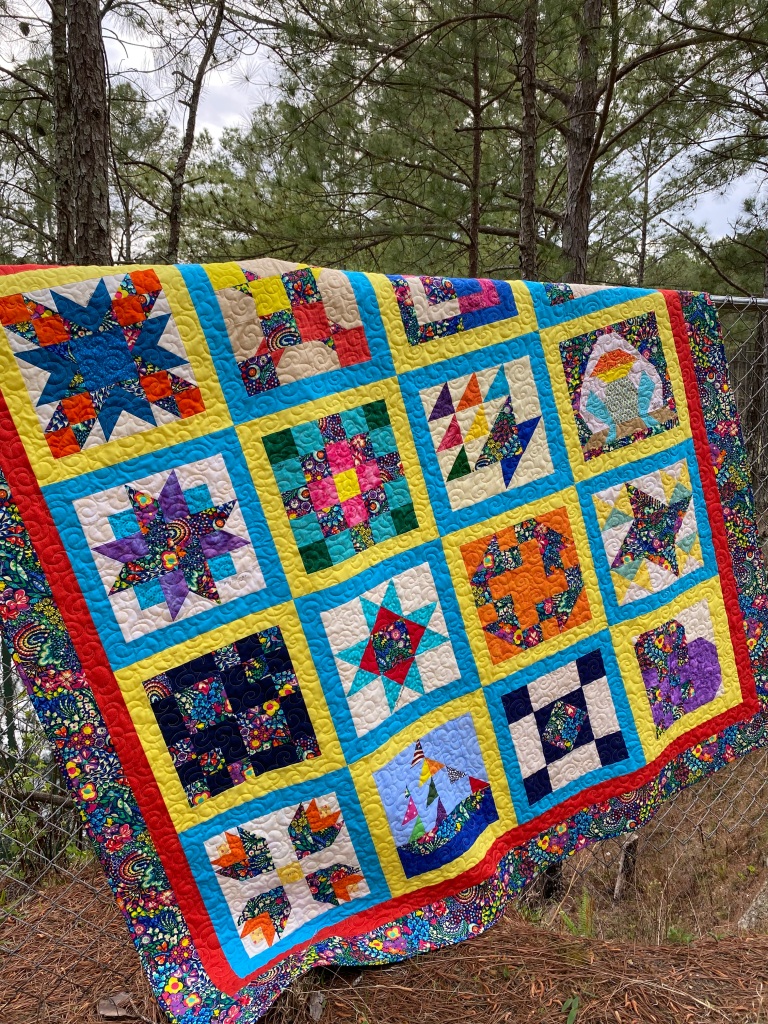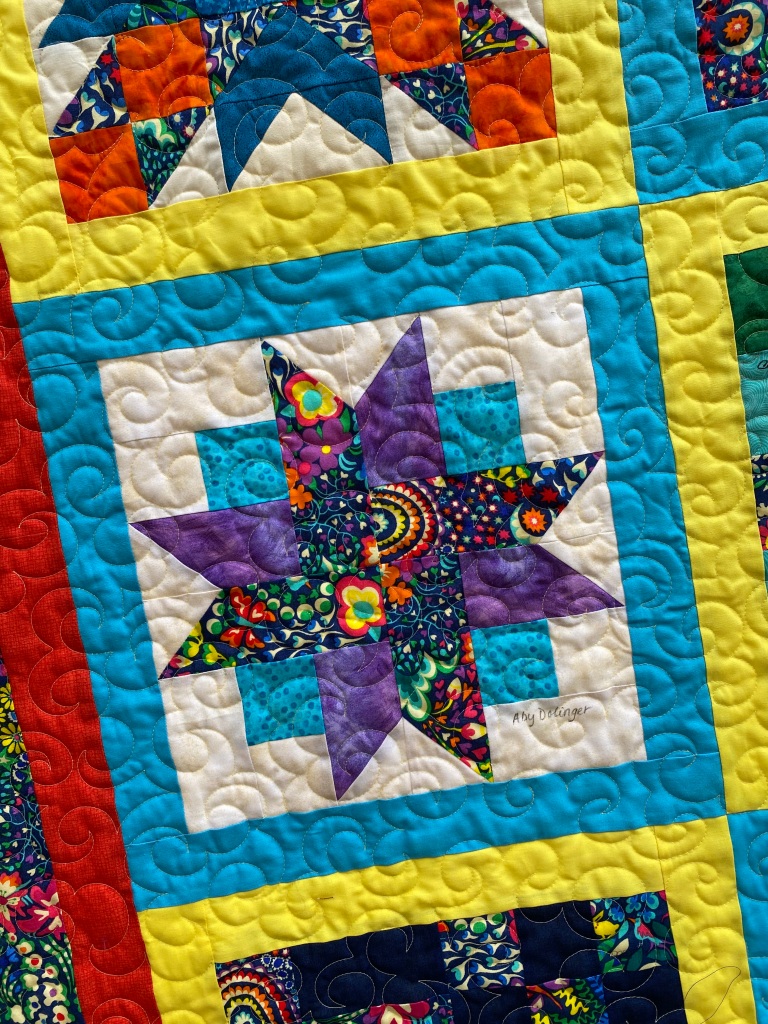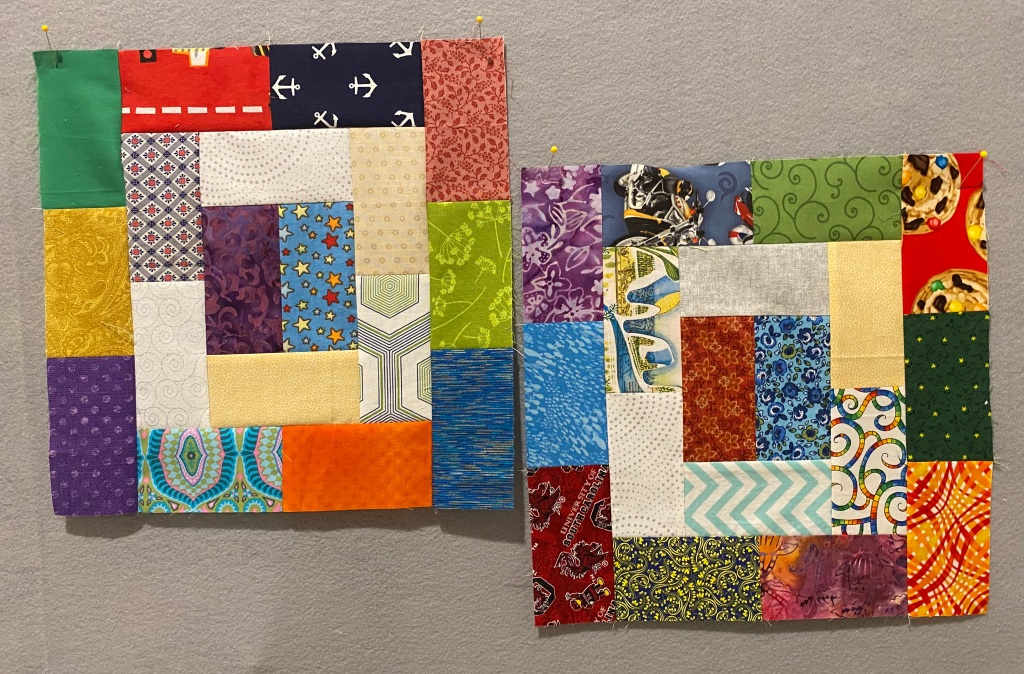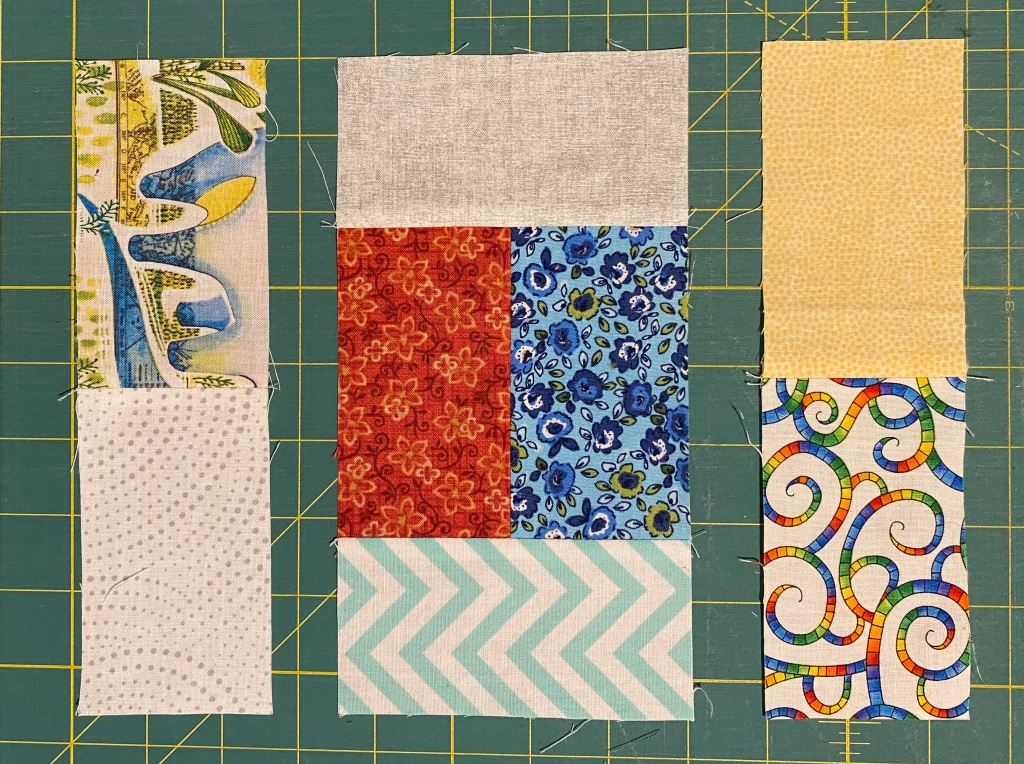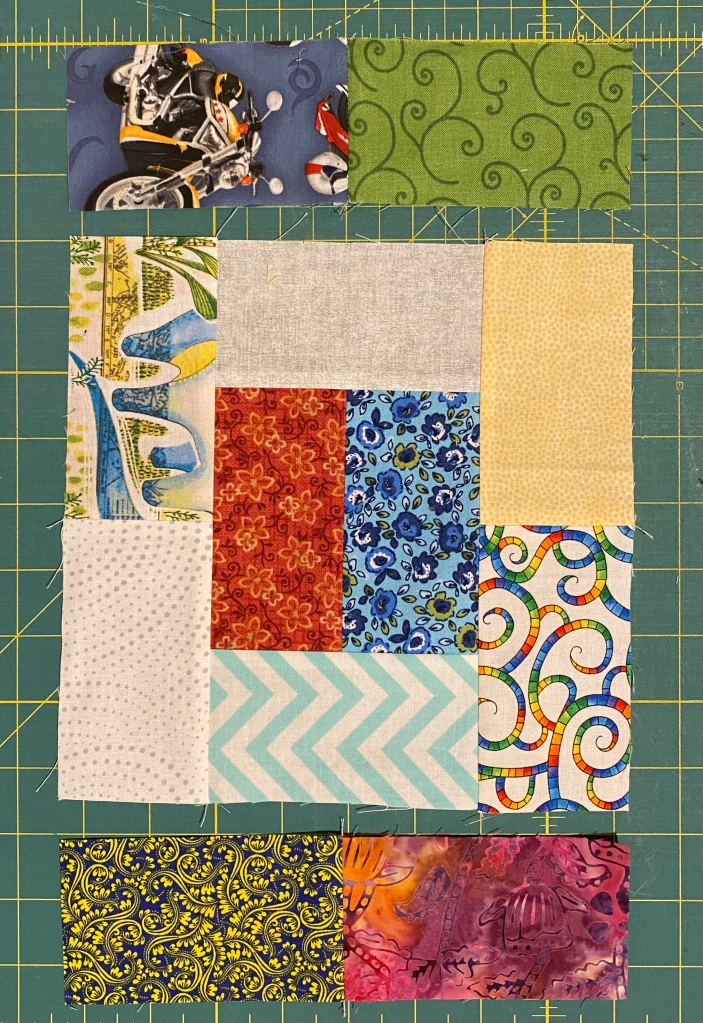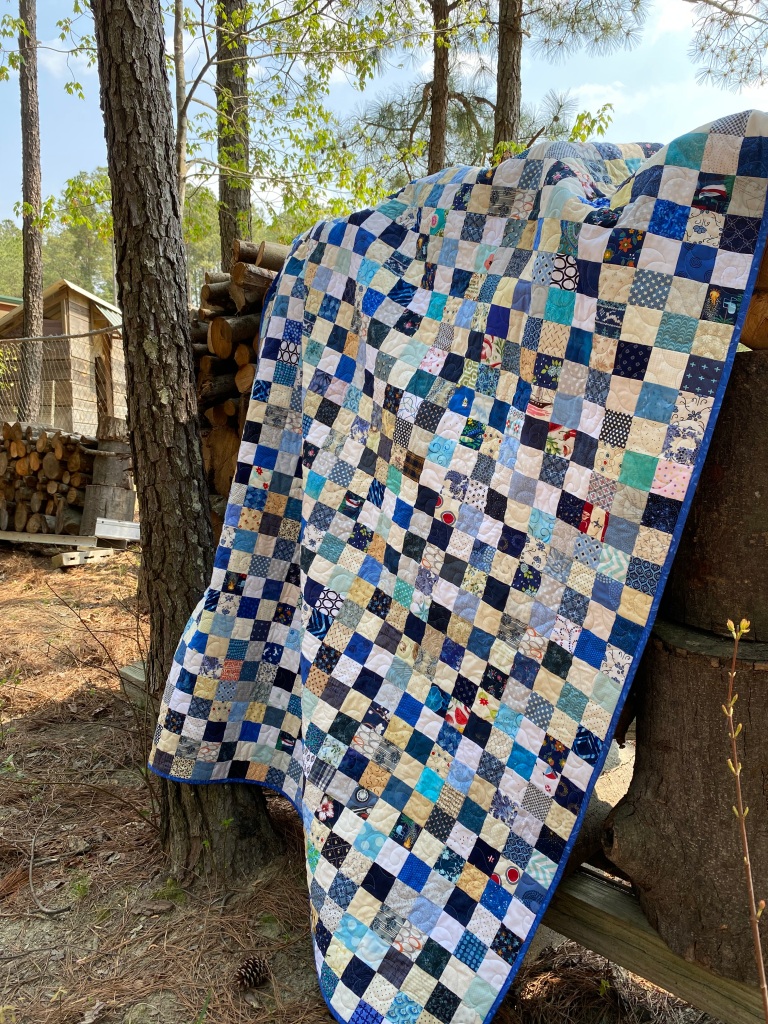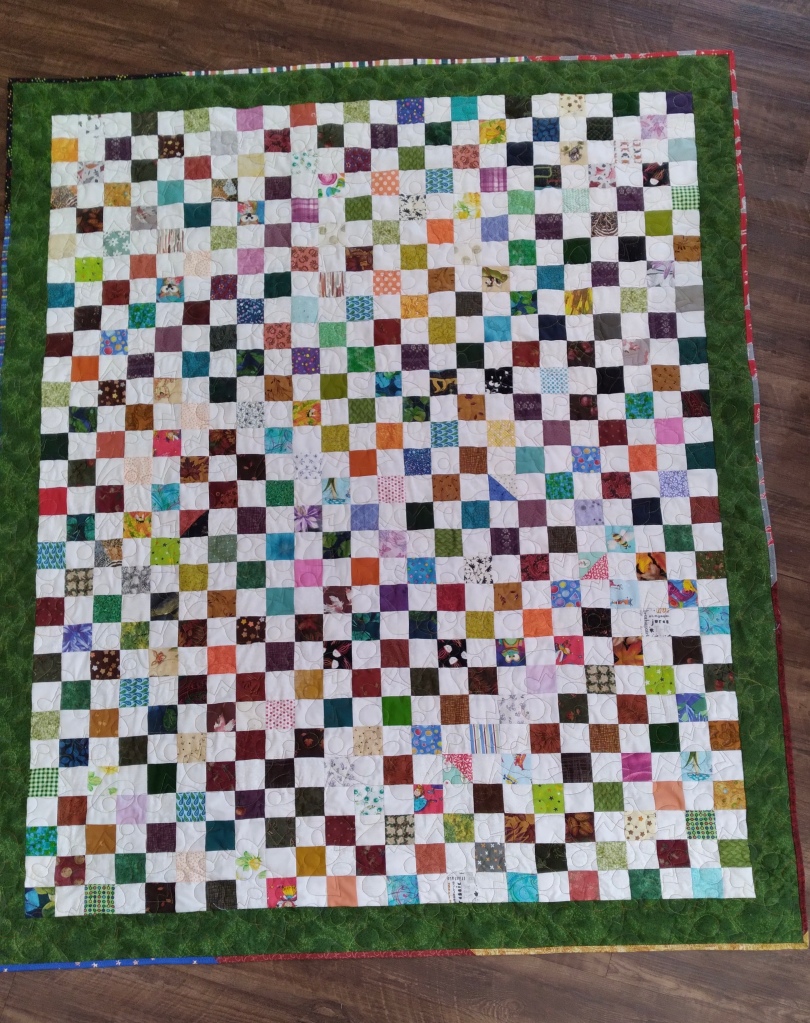Today’s blog post is a veritable smorgasboard of quilts and quilt blocks submitted by blog readers. Enjoy feasting your eyes!
First up is a Checkerboard quilt made by Becky B. She used scraps of brown, green, and blue fabrics, making the project appropriate for a man. Becky has a charitable organization in mind that will welcome her donation.
Karlene made her Checkerboard from a half-jelly roll of Kim Diehl’s “Quiet Grace” line. She paired each 2 1/2″ x WOF strip with an off-white background strip, and, after sewing and pressing them, cut them in 2 1/2″ increments. She sewed the resulting sixteen two-patches into two Sixteen Patch blocks, keeping the same color in each block. This idea for constructing a Checkerboard quilt appeals to me just as much as the random blue and white quilt I made. (Click here to view it again.)
After completing my Checkerboard quilt which used most of my blue scrap 2 1/2″ squares, I began making Potato Chip blocks from 2 1/2″ x 4 1/2″ scrap rectangles. When I showed my blocks to Colleen, she jumped on the bandwagon and cut rectangles for a boy’s quilt and more rectangles for a girl’s quilt. She has already completed the boy’s quilt top. The novelty prints she used make it a fun “I Spy” quilt.
Jan emailed me a picture of her Tulip Star, April’s assignment for the “Barn Star Sampler” block of the month. I love the subtle shading of the fabrics she selected from her fat quarter stack!
I am also facilitating the “Blushing Blooms” BOM at Sew There! Quilts and More in Angier, NC. Perhaps you have noticed the picture of the pink and burgundy quilt in the header of this blog. The header picture shows some of the blocks included in this sampler quilt designed by Kaye England. The assignment for April was making five Tulip blocks, and Terry did a wonderful job sewing hers. (Click here to see a picture of the entire quilt. Bonnie at Sew There! has month-by-month kits if you are interested in making this gorgeous quilt.)
Thanks, ladies, for sharing pictures of your quilts and blocks. Seeing your progress and creative ideas inspires us!









